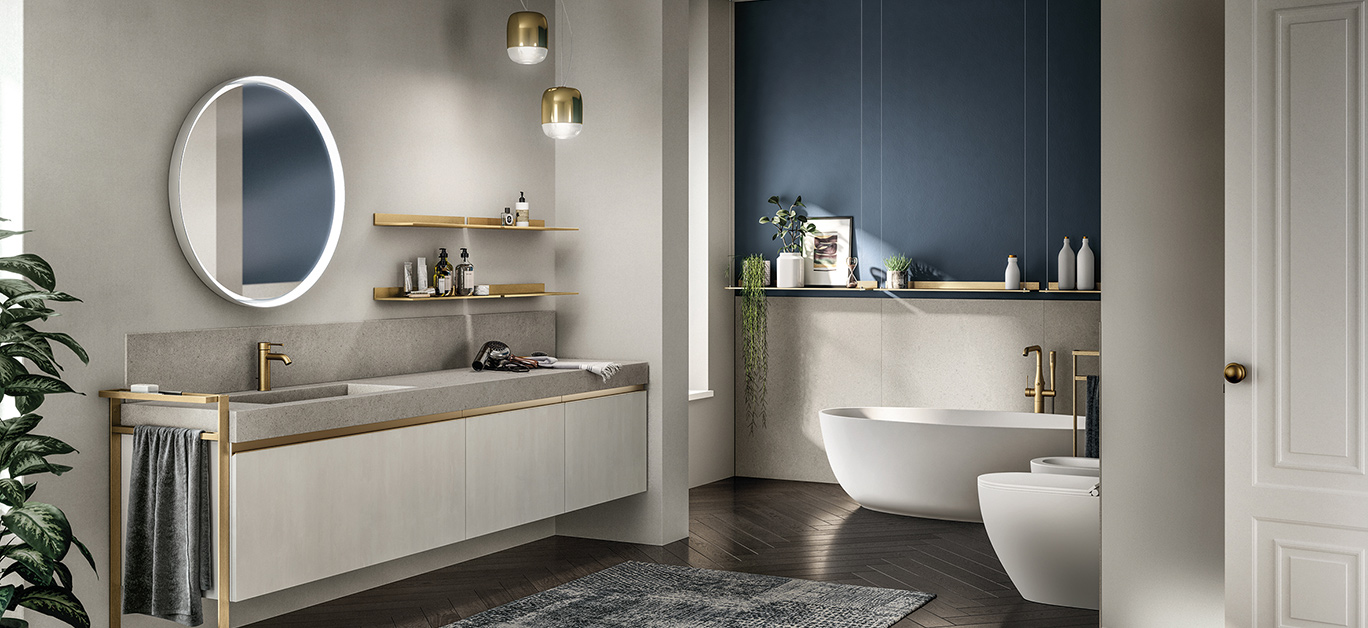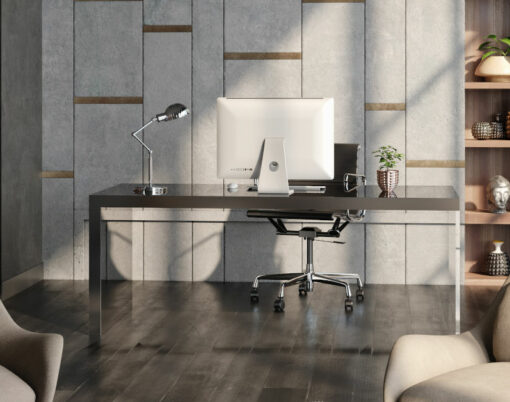If there’s a room that deserves a little luxury, it’s the bathroom. After a long day, what better way to unwind than a lasting bath or shower in a room that should not only function well, but should be designed for optimal comfort and indulgence, too.
This only ponders the question, which lights will be best for your bathroom and where should you position them? Fabiana Scavolini, CEO of Scavolini, throws some light on the subject with the answers to some key questions about bathroom lighting.
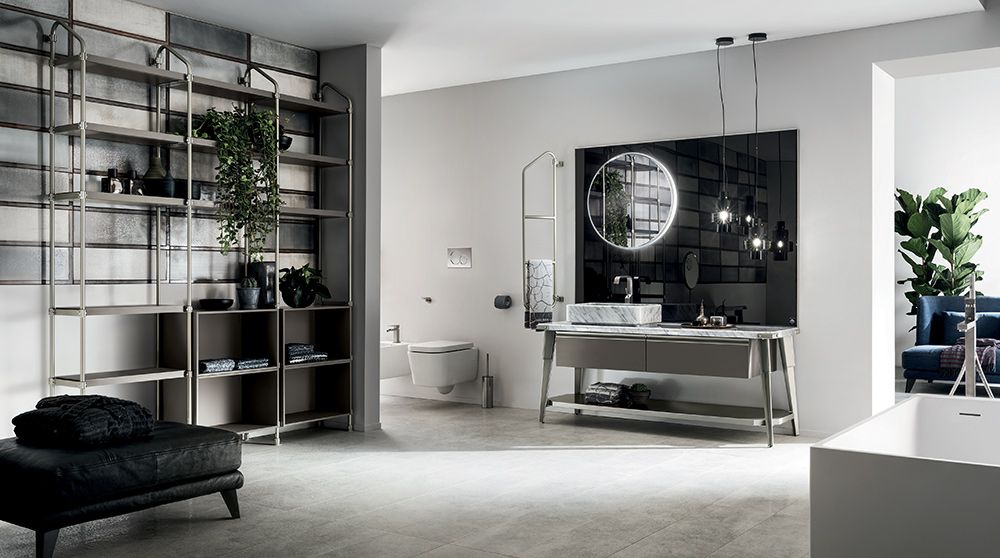
Should I plan my bathroom lighting in advance?
Absolutely! You’ll need to do this to make sure you have the necessary cabling installed. Start by creating a floorplan and marking out the position and dimensions of the key elements (basin, WC, bath, shower, door and window, as well as the light switches). This advance planning will also help you budget for how many lights you need and how they’ll be operated.
Next, think about the type of lighting you want as this will affect the overall look and feel of the space. Don’t forget to decide if you want dimmer switches. If you’re anything like me, you’ll want to tailor the brightness of your lights according to how you’re using the bathroom. For example, you may need a brighter light when applying make-up in the morning but a dimmer glow when relaxing in the bath at night. An electrician or lighting designer can help with your lighting choices and ensure they’re all installed safely.

What is an IP rating?
Bathroom lights come with an IP (ingress protection) rating, which indicates how resistant they are to water. The higher the rating, the better the protection will be. You’ll find the IP rating on the lightbulb box or in the description if you’re buying bulbs online.
Why are bathroom lighting zones important?
We need both water and electricity in the bathroom so it’s important to ensure they don’t come into contact with one another. All bathrooms are divided into electrical zones, each of which has an IP rating outlining the level of water resistance that lighting will need to be safe. The zones are based on the amount of water found around the bathroom. For example, the area inside the bath or in the shower is defined as zone 0, and not surprisingly, bulbs here must be low voltage and rated at least IP67 (i.e. completely immersion proof).
Zone 1 is the area above the bath or shower (to a height of 2.25m from the floor). Fittings here should have an IP65 rating. Zone 2 covers the area stretching 0.6m outside the perimeter of the bath or shower and to a height of 2.25m from the floor. Fittings here should have a rating of at least IP44. Outside of zones 0 to 2, you don’t need IP-rated lights. However, if you’re in doubt, look for lighting with an IP44 rated bulbs (or higher) for zone 2 and above as they’ll offer splash protection.
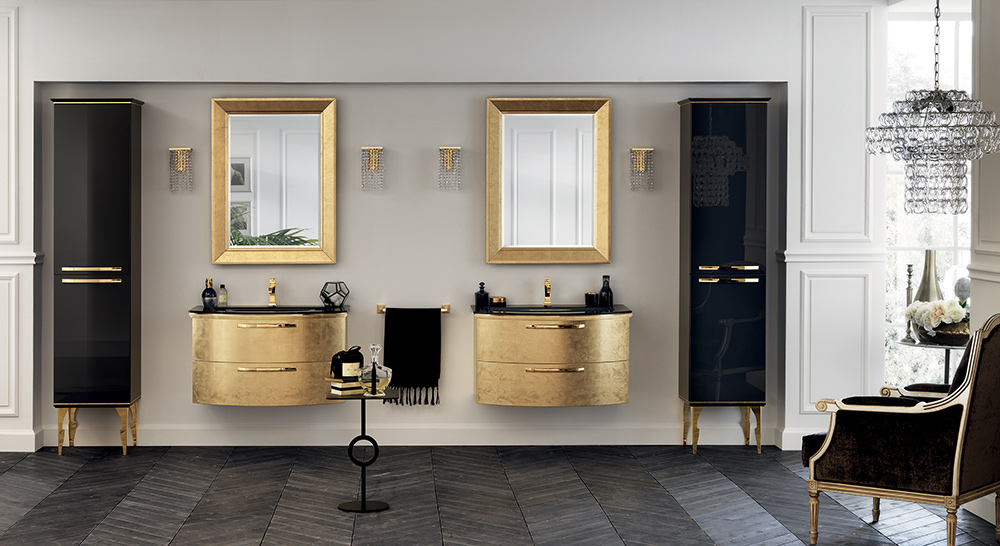
Will one bathroom light do?
No! You should always use more than one source of light. A combination of ambient, task and accent lighting will create a bathroom that can adapt from a functional space in the morning (complete with practical lighting for everyday tasks) to a relaxing space in the evening with ambient lighting.
What is ambient lighting?
Ambient lighting means the main source of light in a room and is the one that enables you to see where you’re going. It differs from task lighting – lights that help you with a particular activity – and accent lighting, which draws attention to a feature.
Downlights are a popular ambient light source in the bathroom as they provide a general wash of light. Try to avoid setting them in a regular grid formation: this will make your space look evenly lit but it’ll also create a flat, bland effect. Instead, think about where lighting is needed most, such as above the wash basin. A word of caution here: be careful not to position the downlight directly over your head because it’ll cast unflattering shadows across your face. Work with an electrician or lighting designer to plan its position carefully.
If you’re lucky enough to have a lofty ceiling, consider a decorative chandelier (remember that it must be IP rated). Because of zone restrictions you may not be able to indulge in the ultimate dream of suspending it over the bath, but there’s always the possibility of hanging it in the centre of the room.
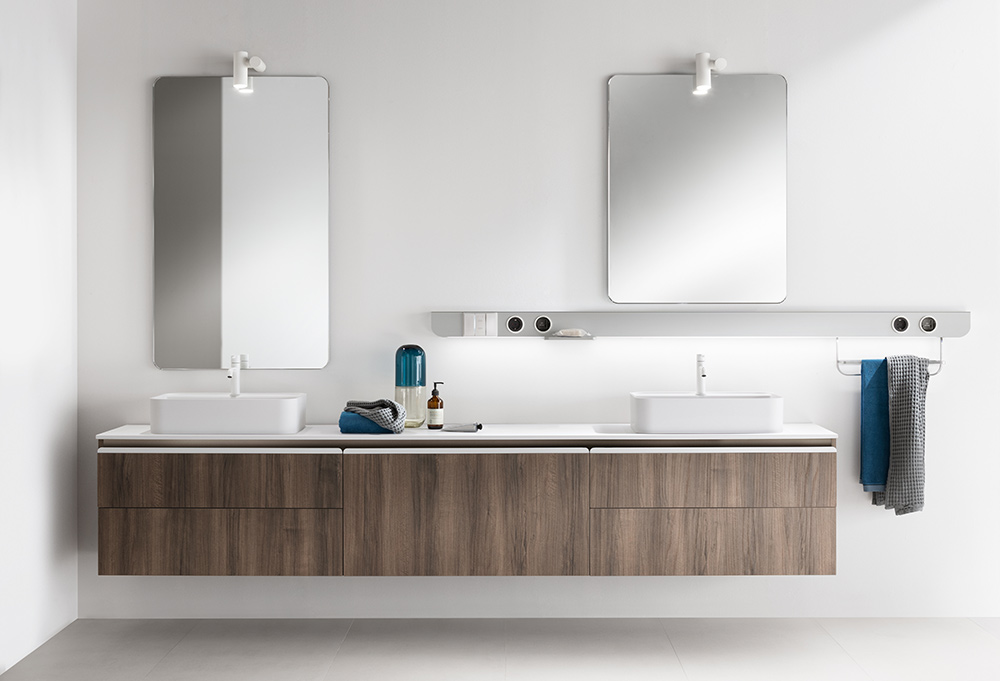
Where should I put task lighting?
Task lighting is crucial around the mirror as this is where grooming takes place. A light on either side of the mirror will illuminate the face – think wall lights or pendants. Alternatively, you could opt for a mirrored cabinet with integrated lights.
How can I light my shower?
My advice is never to centre a light overhead in a shower as the effect is unflattering. It’s much better to wash light down the wall of the shower to draw attention to those tiles you spent hours agonising over!

I’ve read about accent lighting. How can I apply it to my bathroom?
Accent lighting in a bathroom helps to create a spa-like feel. For example, you could highlight wall niches with downlights or easy-fit strip lights, or install spotlights in the floor or the wall behind a freestanding bath to make it a statement feature. Low-level or floor-recessed lighting is a brilliant way to add a soft glow to the bathroom, while easy-fit LED strip lights under a wall-mounted vanity will make the whole space look lighter.












